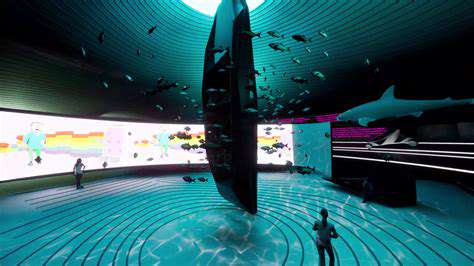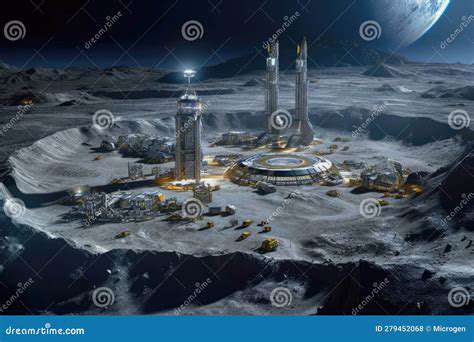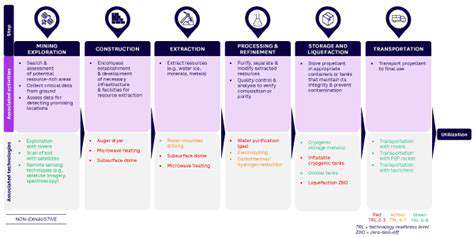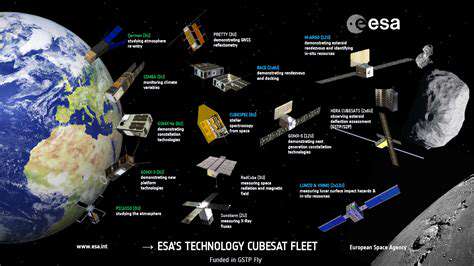Ethical Considerations and Preservation
The field raises complex questions about cultural heritage protection in space. Should historic sites like Tranquility Base receive special protection? How do we balance scientific study with preservation? International agreements will be crucial as more nations and private entities access space. Without proper safeguards, we risk losing irreplaceable evidence of humanity's first steps beyond Earth.
Collaboration and Future Directions
Successful space archaeology requires unprecedented cooperation between disciplines. Astronomers, materials scientists, historians, and engineers must work together to interpret findings. Future priorities include developing non-invasive study techniques and establishing protocols for handling sensitive materials. The field's ultimate goal should be creating a comprehensive record of human activity in space before crucial evidence degrades beyond recovery.
Preserving Orbital Artifacts: Challenges and Strategies
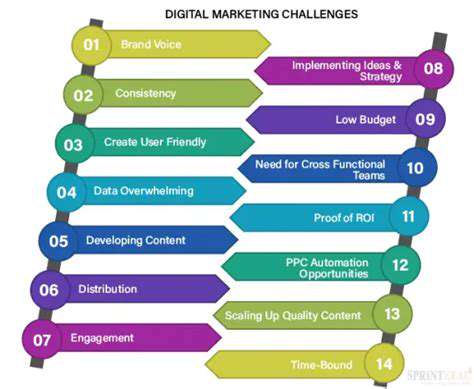
Preserving the Legacy of Orbital Missions
Every piece of space hardware tells a story about the era that created it. Early satellites reflect the geopolitical tensions of the Cold War, while modern spacecraft demonstrate international cooperation. Preserving these artifacts requires understanding their technical specifications and historical context. Unfortunately, many early space programs kept poor records, making reconstruction challenging.
Challenges in Preservation and Access
Space presents unique conservation problems. Microgravity affects material degradation differently than Earth's environment. Radiation slowly damages electronics and alters material properties. Even accessing artifacts poses difficulties - some orbit at velocities exceeding 17,000 mph. Developing retrieval methods that don't further damage artifacts remains an unsolved challenge.
Ethical Considerations and Public Engagement
Who owns abandoned space hardware? Legal frameworks remain unclear. Meanwhile, public interest in space history grows, creating demand for artifact displays. Museums face dilemmas about displaying potentially hazardous materials. Finding ways to share these treasures safely while respecting their historical integrity requires careful planning.
Potential for Scientific Discovery
Studying long-term space exposure effects has practical applications. Materials that survived decades in orbit could inform future spacecraft design. Unexpected preservation of organic materials might reveal new stabilization techniques. Each recovered artifact offers potential breakthroughs if studied properly.
The Future of Space Archaeology: Protecting Our Orbital Heritage
Preserving the Orbital Debris Field
The growing debris cloud threatens active satellites but also represents an archaeological goldmine. Early debris shows primitive solutions to problems later solved more elegantly. Documenting this technological genealogy helps engineers avoid repeating past mistakes. Future cleanup efforts must balance safety concerns with historical preservation.
Unveiling Lost Space Missions
Many early space attempts failed spectacularly. Finding and studying these space shipwrecks could reveal why. Some lost probes might still contain valuable scientific data if recovered. Others might show ingenious solutions to problems thought insurmountable at the time.
Understanding the Impact of Space Weather
Solar activity affects spacecraft differently depending on design and materials. Studying how various generations of hardware weathered storms helps improve future designs. This forensic engineering approach could significantly enhance spacecraft longevity.
Protecting Historic Spacecraft and Stations
Iconic vehicles like early space stations deserve careful documentation before reentry. Techniques like 3D scanning allow detailed study without physical contact. Creating comprehensive digital archives ensures these engineering marvels aren't forgotten even if physically lost.
The Ethical Considerations of Space Archaeology
As commercial space activities increase, protecting historic sites becomes urgent. Clear guidelines must prevent looting or destructive analysis. International cooperation will be essential to preserve humanity's shared space heritage for future study and inspiration.
Ethical Considerations and Future Research Directions

Ethical Implications of Emerging Technologies
Space archaeology's tools raise their own ethical questions. High-resolution imaging could violate privacy if misused. Advanced material analysis might accidentally reveal proprietary technologies. The field must develop ethical standards that respect both scientific inquiry and legitimate concerns.
Ensuring Transparency and Accountability
Research methodologies should be openly documented to allow peer review. Findings must be shared responsibly, considering potential military or commercial sensitivities. Establishing review boards with diverse expertise could help navigate these complex issues.
The Role of Policymakers and Regulators
Current space law inadequately addresses archaeological concerns. New regulations should protect significant sites while allowing legitimate research. International treaties may be needed to prevent destructive competition over historically important artifacts.
Addressing the Societal Impact
Public education about space heritage fosters support for preservation efforts. School programs could highlight how studying past space endeavors informs future exploration. Engaging diverse communities ensures space history remains relevant to all humanity.


